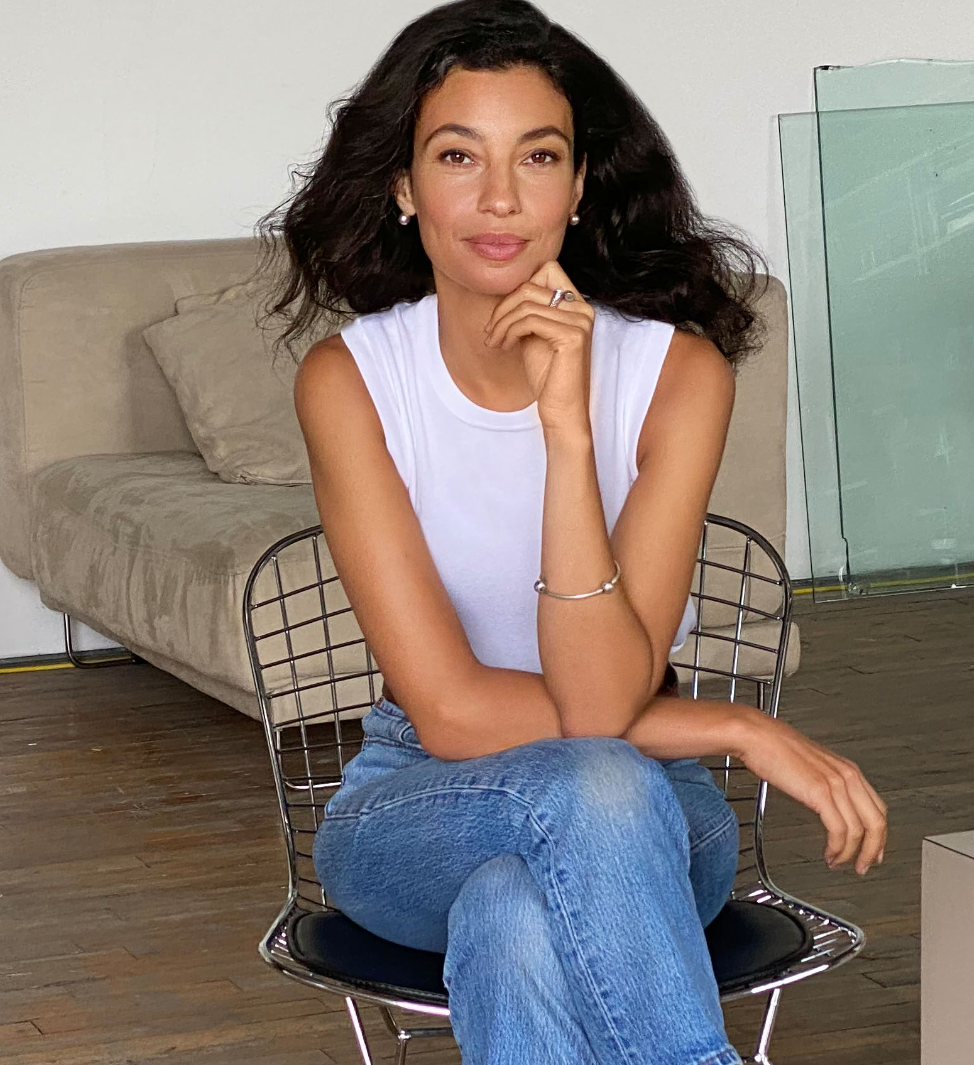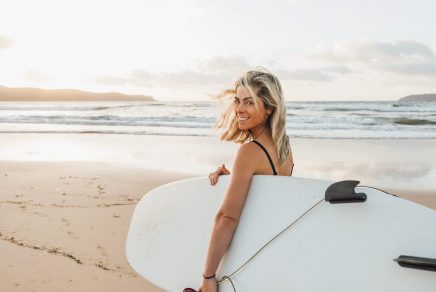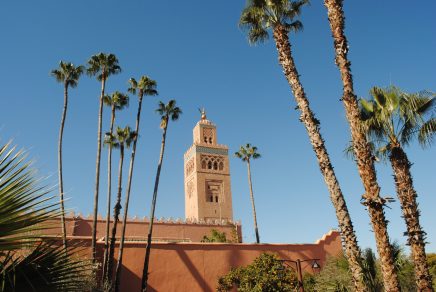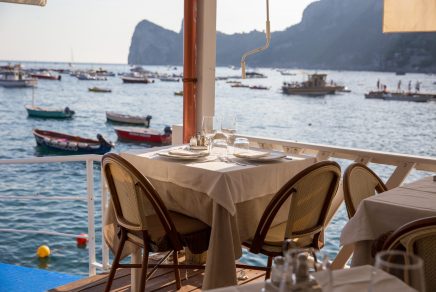Marrakesh is a land of diversity, full of treasures to be discovered. From the bustling souks to the modern city, you can discover its spicy gastronomy, its gardens, its nightlife, its traditional crafts, its wellness, its historical sites, its ecotourism and, of course, its cultural richness. A great starting for a successful trip to Morocco and Marrakech, is to respect the environment, and meet engage with the local population.
It’s essential to adopt the practices that the Moroccans value the most: courtesy and human contact.
State of mind: welcome the change of pace
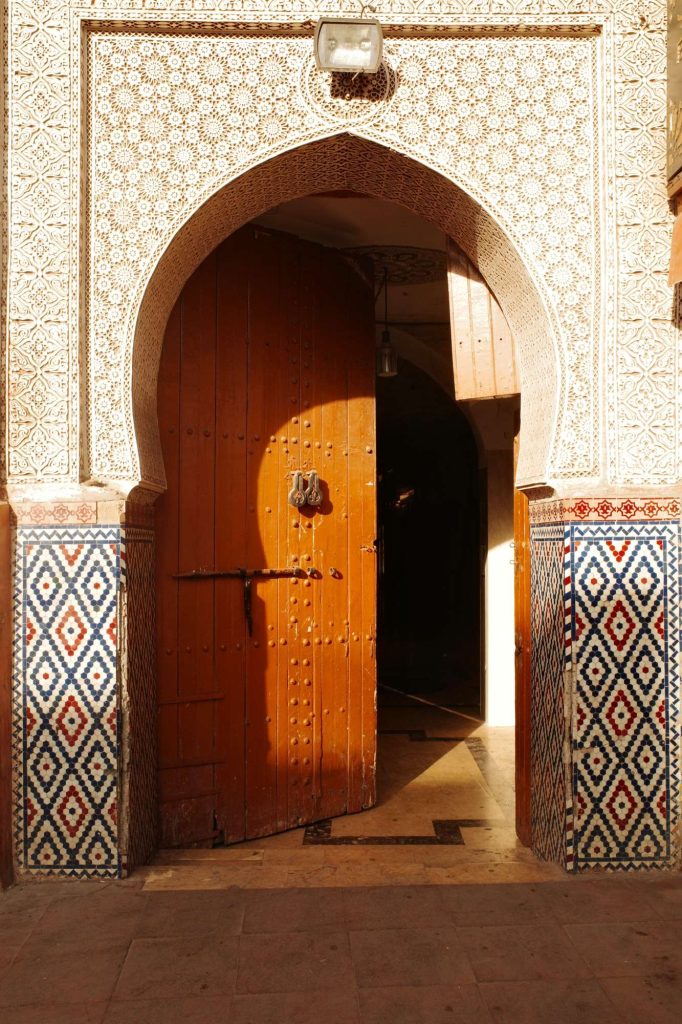
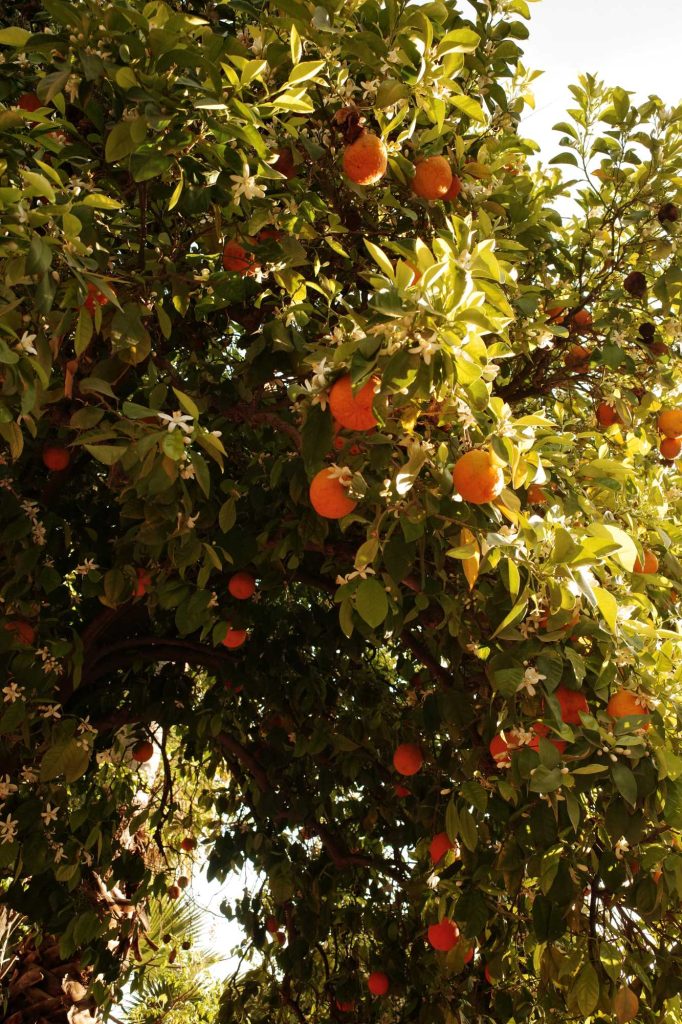
Whether in the souk or at the dinner table, Moroccans take the time to chat and let themselves be led by spontaneous encounters. Life in Morocco is lived at a different pace than in North America. Slow living and slow travel enthusiasts will be delighted.
Marrakesh is a great place to anchor yourself in the benefits of the present moment and put your worries aside. The red city reveals itself when you let go of thoughts of the future, when you take advantage of your vacation to forget about the daily grind and anchor yourself in the benefits of the present moment. It’s a state of mind that is conducive to discovery and will allow you to truly recharge your batteries.
Encounters: contribute to a web of intercultural wealth
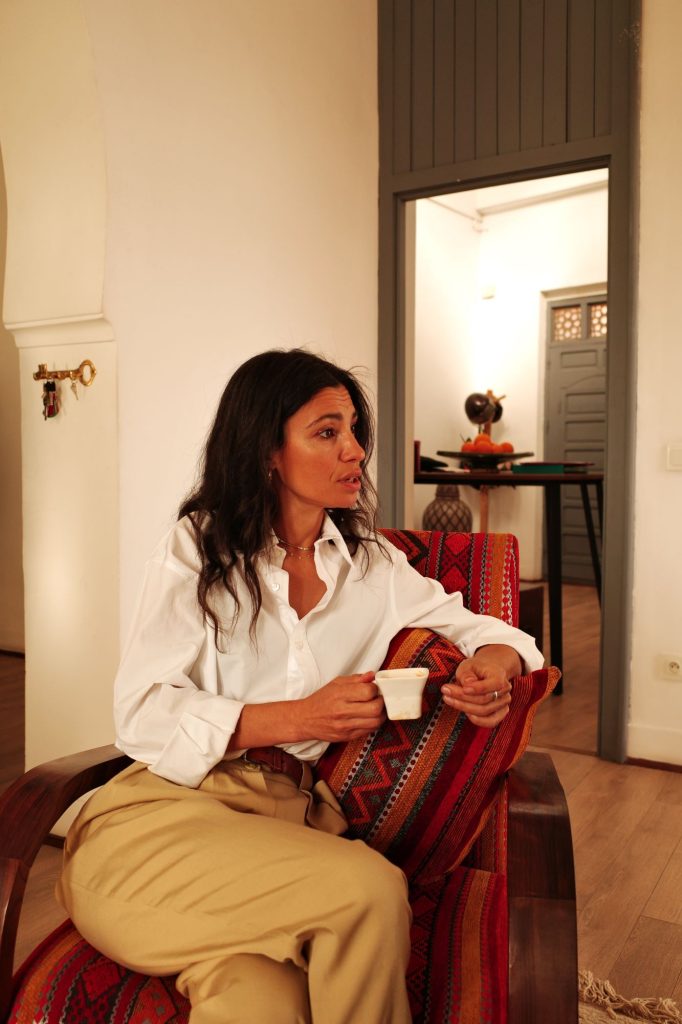
One of the main attractions of Marrakesh is the people you meet there. Residents are famous for their warm welcome! Take the time to add a few words of Darija (Moroccan dialect of Arabic) or Tamazigh (Berber and indigenous language) to your vocabulary. Immerse yourself in local daily life and you will you find yourself part of a human experience that is both uplifting and enriching—for mind and soul.
Bear in mind that greetings are an essential part of Moroccan culture. Respecting them opens the door to respectful interactions and is one of the most important Marrakesh travel tips. Here are a few basic phrases that I would like to suggest that you learn, as they will come in handy during your outings in Marrakesh.
- Salam Alaykum: means “peace be upon you” and is used to say hello, to which we return the grace by saying Alaykum Salam, to say “and peace be upon you too”.
- Shokran: to say “thank you
- Shokran bezef: to say “thanks a lot”.
- Labass: to say “how’s it going”, to which we reply Labass, Hamdoullah; or in the Tamazigh language Manik Tgit
- Laftek: to say “May God protect you”, usually used after Shokran
Handicrafts: dive into the heart of Moroccan tradition
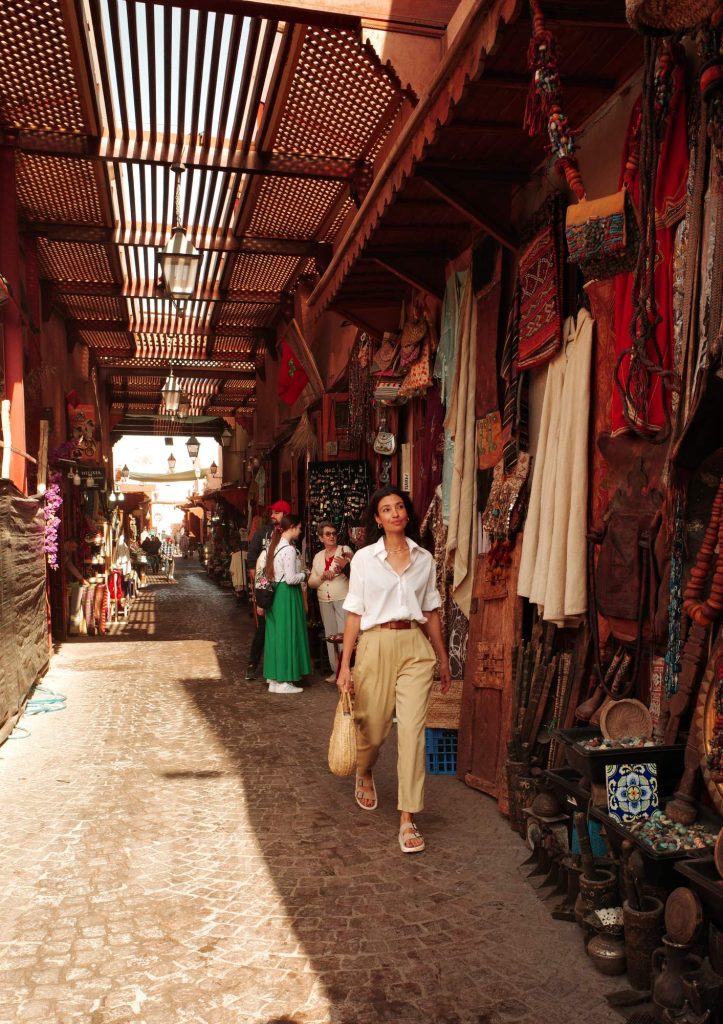
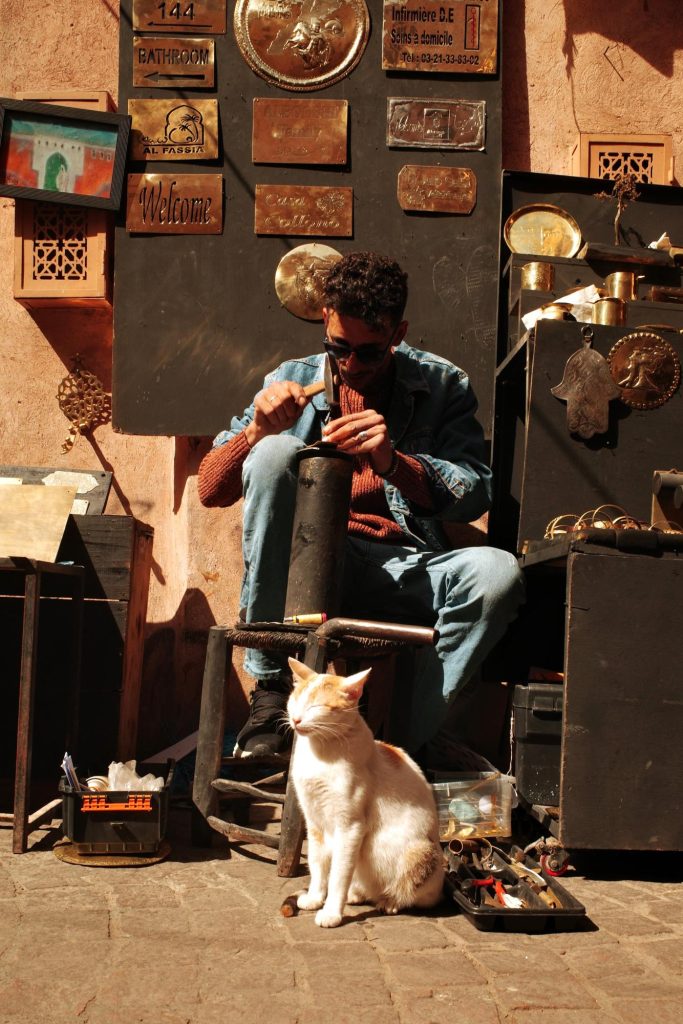
As you stroll through the winding streets of the medina, you’ll be seduced by the diversity and richness of Moroccan craftsmanship. From natural cosmetics in dazzling colors to hand-decorated leather babouches to Amazigh (Berber) rugs woven with intuition and passion, Marrakesh is a design enthusiast’s paradise.
Don’t hesitate to ask about the craftsmanship, materials and origins of the products – you’ll learn more about the Moroccan terroir, its expertise and origins, while supporting the local economy.
A yellow and orange carpet, for example, might come from a region where saffron is grown. An argan-based cosmetic product might lead you to the region of Essaouira, where the countryside is rich in argan trees. And the decorative zelliges found in the architecture of the riads? Their heritage comes from the ancient capital city of Fez.
The medina is a place of many exchanges. Follow your intuition, ask questions, and see where your curiosity will take you.
Markets: master the art of negotiation
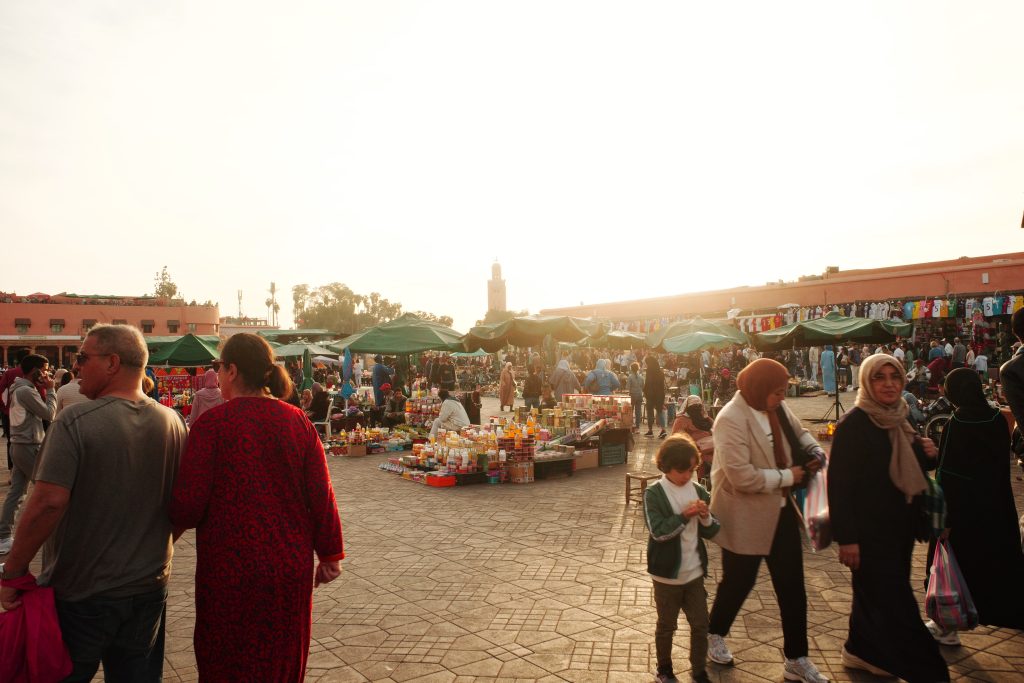
Vending techniques in Morocco are different from those in Canada. Understanding this difference is one of the most important Marrakesh travel tips!
In the bustling souks of the medina, bargaining is a common and valued practice. It’s deeply rooted in Moroccan culture, so it’s perfectly appropriate to play the game, to offer different prices and to ask questions. Far from being a nuisance, it’s a great opportunity to share a social moment with the locals. Remember to keep a smile on your face and show respect to the shopkeeper.
It’s not uncommon for me to take the time to browse and compare prices between different stalls, even when I’m enchanted by a unique handmade piece. This helps me figure out a price that I’m comfortable with.
Volunteering: get involved with the local community
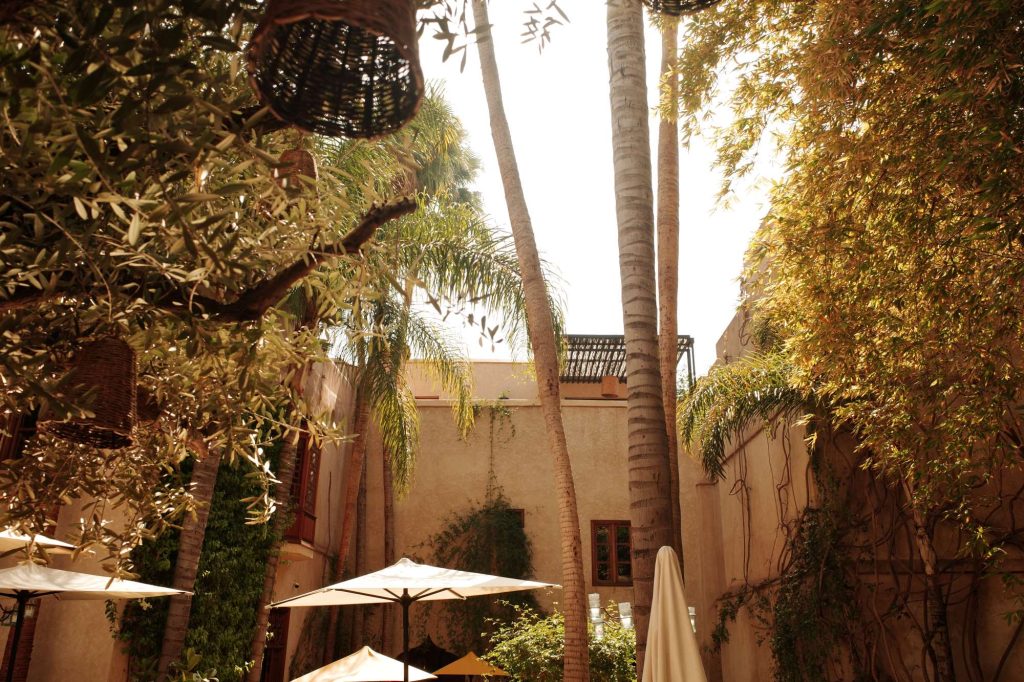
For travelers who wish to participate in solidarity activities while in Morocco, Marrakesh offers volunteer opportunities with local associations. You can make a positive contribution to the development of the city and create unforgettable memories by getting involved in a responsible way.
The best way to do this is to get in touch with local curators who know the area and the various organizations whose work is linked to the initiatives that interest you most: health, the environment, education, agriculture, youth or village reconstruction, for example. Among the associations and organizations in the Marrakesh region, here are a few that, in my opinion, do excellent work:
Safety: Be prepared as a solo traveler
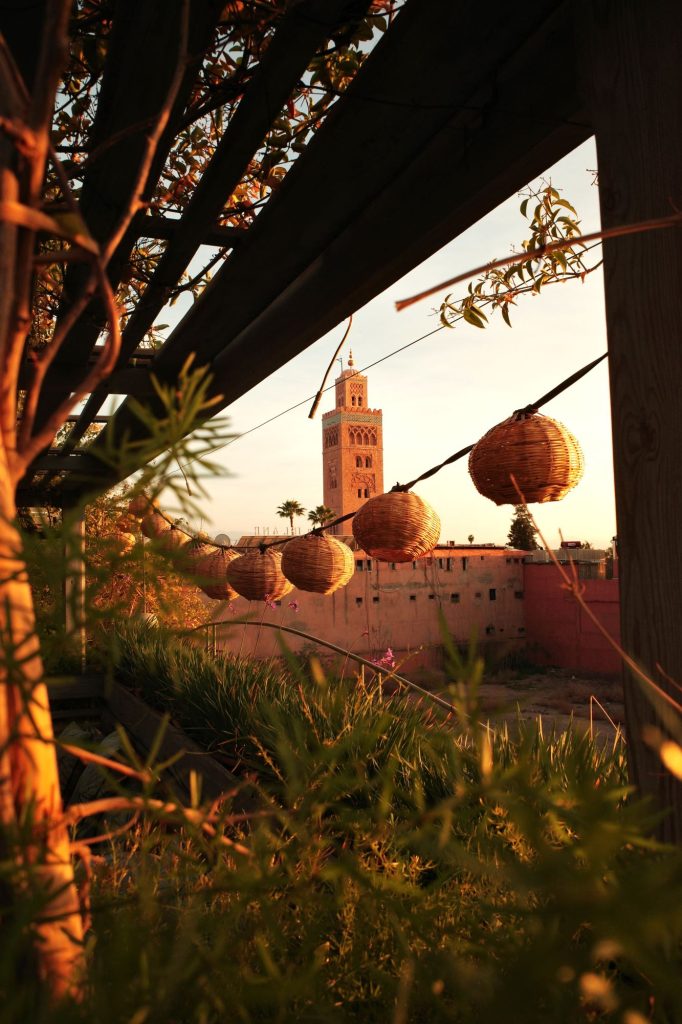
In Marrakesh, as in all major cities around the world, I recommend that you remain vigilant and follow certain safety rules.
For example, avoid poorly lit areas at night and use official transportation such as small taxis. Book your transportation in advance if you’re going clubbing or out late at night.
In terms of clothing, Marrakesh gets very hot in the summer. Loose clothing made of natural fibers such as cotton or linen will allow your skin to breathe while protecting it from the sun. On the other hand, since the city is located in the desert and temperatures can drop significantly in the evening, bring a sweater or jacket if you’re traveling in the spring or fall. Finally, if you’re a woman and you’re wondering what to wear on your trip to Morocco, keep in mind that Marrakesh is a cosmopolitan city, but the local customs may be more modest than they are in North America. My advice is to dress for comfort first and foremost.
Transportation: choose from a range of options to suit your preferences
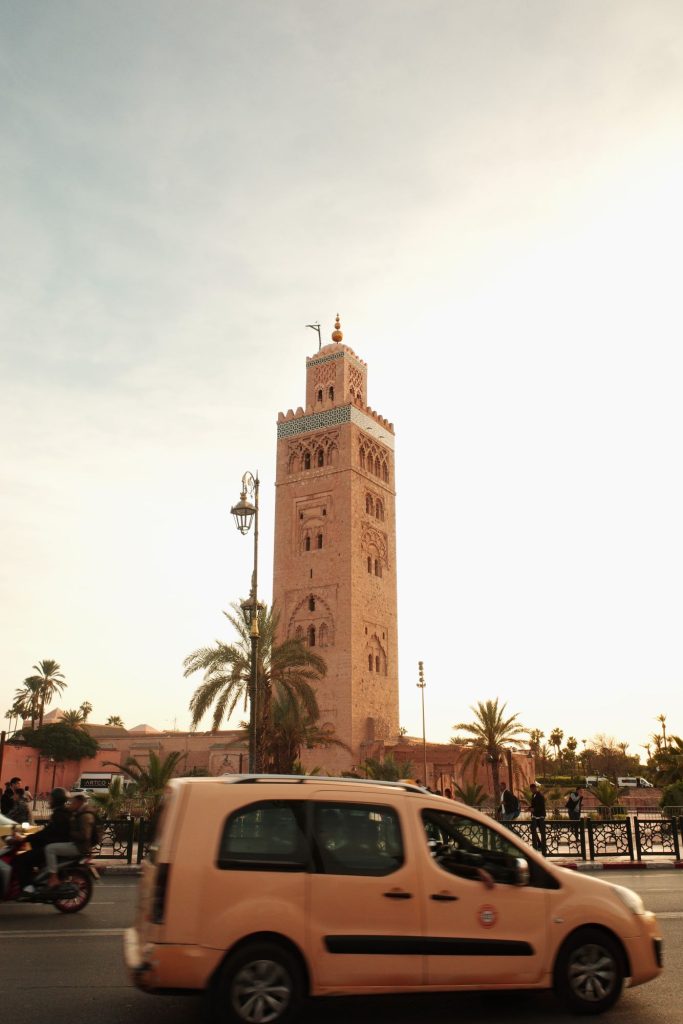
If you want to get around Marrakesh without driving, I can confirm that walking is the best way to go. If you need to, you can also get around by taking a taxi. There are two categories of taxis: the small taxis are used for trips in the city center, while the big yellow taxis are used for trips outside of the city. If you prefer mobile apps, the InDriver app might be just what you’re looking for.
For a different perspective on the city, there are also bicycle rentals at Pikala Bikes.
Either way, especially on the outskirts of the medina, you’ll be sharing the road with pedestrians, motorbikes, bicycles and carriages. So keep your eyes open, keep your cool, and follow the natural flow of traffic.
All photo credits: Frédéric Buffaras/Air Transat

